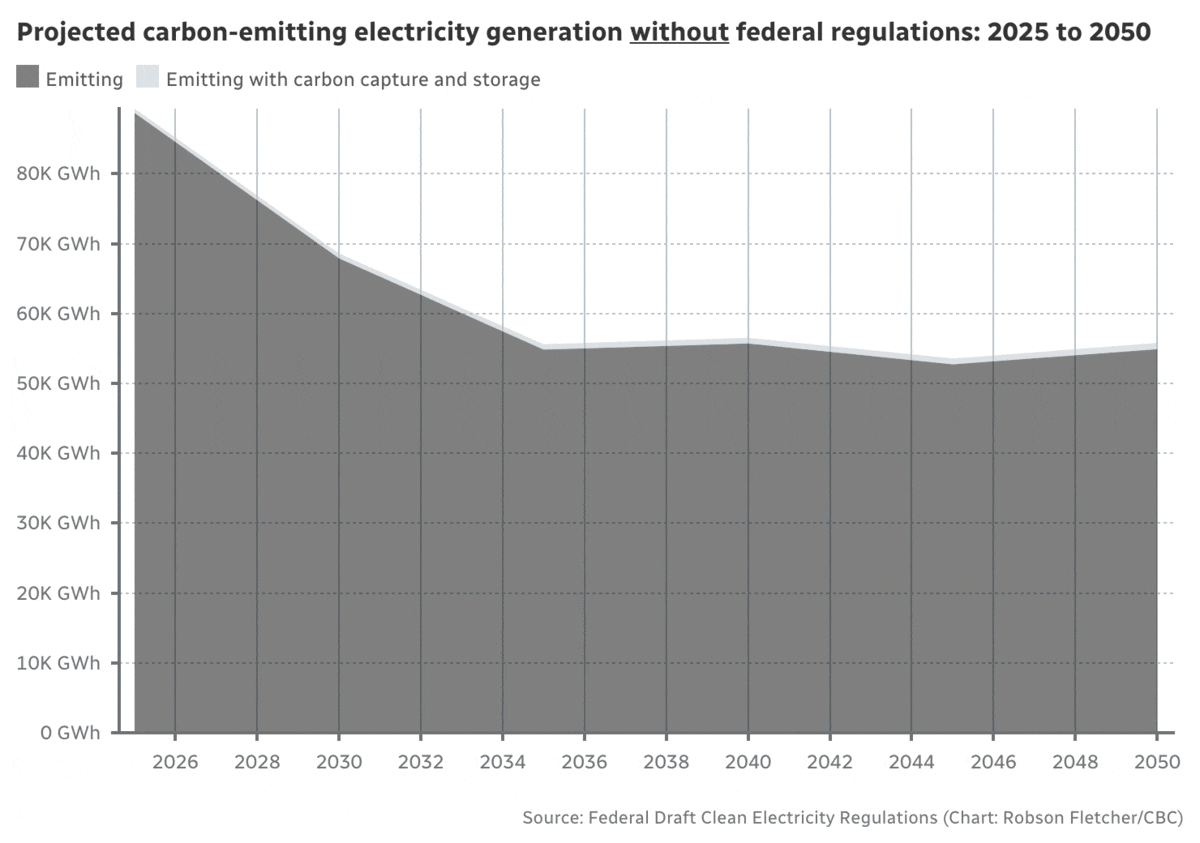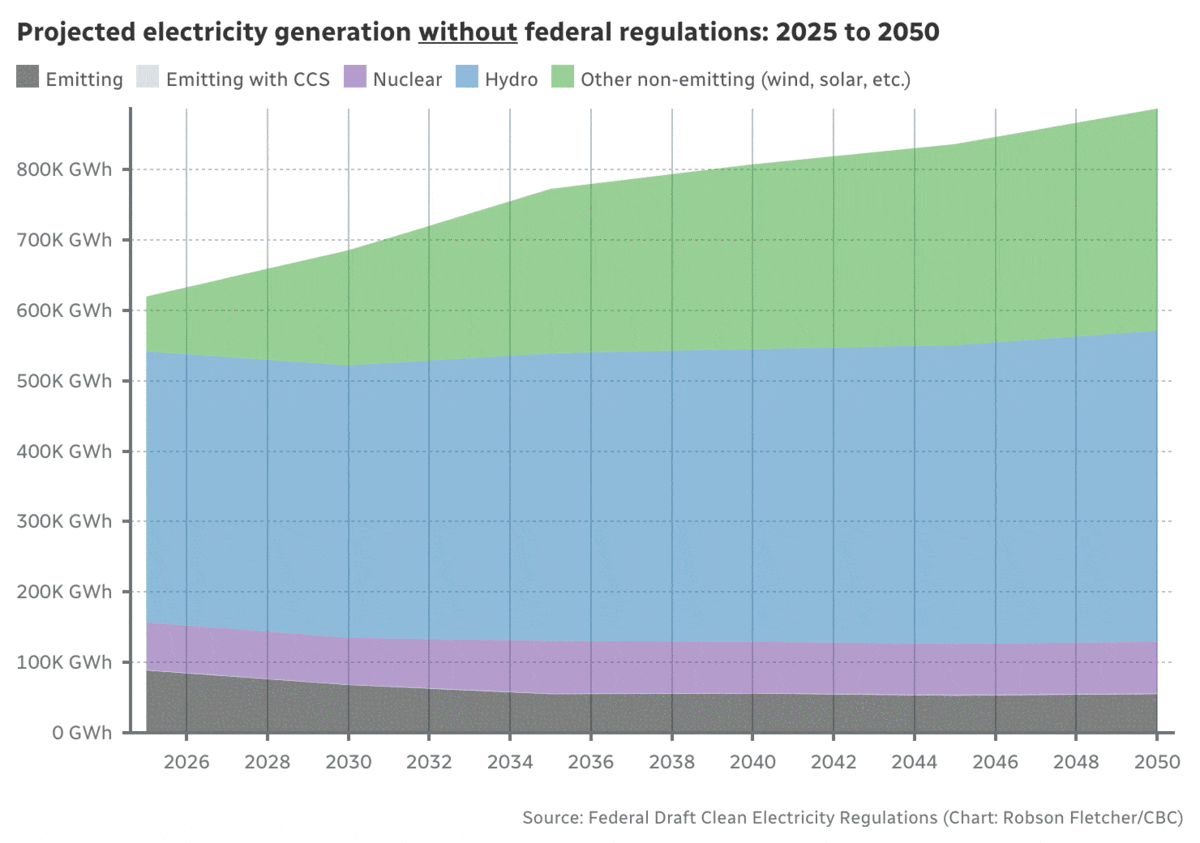As Canada looks to move its power grid toward net-zero with new federal regulations, the vast majority of the country already gets its electricity from emissions-free sources.
In 2020, 84 per cent of the country’s electricity came from these sources — mostly hydro, along with smaller amounts of nuclear, wind and solar.
Alberta is unlike most of the rest of the country, however.
While renewable power generation has roughly doubled in the past seven years — and the province now gets more electricity from wind and solar than it does from coal — those green sources of power only amounted for 13 per cent of total generation in the province in 2022.
The vast majority of Alberta’s electricity, rather, comes from natural gas.
This is why the draft clean electricity regulations released by the federal government on Thursday have an outsize impact in this province.
Alberta accounted for 47 per cent of the country’s total greenhouse-gas emissions from the electricity sector in 2021, the most recent year for which we have a full inventory.
That’s actually down, slightly, from years prior: back in 2015, Alberta accounted for 59 per cent of electricity-sector emissions.
The reduction is due to the fact that Alberta has been phasing out coal-fired power, which was one of the most emissions-intensive ways to generate electricity.
That process began in 2015 with the goal of completely phasing out coal by 2030.
But the transition went faster than initially anticipated and Alberta power plants are now expected to burn their last lump of coal later this year.
Natural gas has taken up most of that slack, which has roughly half the emissions intensity of coal.
But to achieve its climate goals, the federal government believes those gas plants will eventually have to be phased out, too — mostly.
There are some exceptions in the regulations for continued use of natural gas in peak-demand periods, and some allowance for regular gas-fired generation coupled with carbon capture and storage.
Ottawa argues these regulations are necessary to drive down the use of carbon-emitting methods for electricity generation in the coming decades.
The animated chart below shows the federal government’s projections in two scenarios: with the regulations, and without.

This is where things get contentious between the provincial and federal governments.
Premier Danielle Smith, by contrast, wants to see more generation from natural gas — not less.
“These regulations make desperately needed investments in new natural gas generation almost impossible,” she said Thursday in response to the federal plan.
Smith says the province has its own plan, one that “works towards a carbon-neutral power grid by 2050.”
In Saskatchewan, which also gets most of its electricity from coal and natural gas, Premier Scott Moe has staked out a similar position.
But in most of the rest of the country — and for the vast majority of the people — electricity already comes from emissions-free sources.
If we put the animated chart above in the context of the country’s entire energy mix, you almost have to squint to see the difference the regulations are expected to make at a national scale.

That tiny strip of grey at the bottom of the chart is what the regulations are primarily targeting.
They represent the relatively small amount of greenhouse-gas-emitting electricity generated in Canada, which happens to be disproportionately located in Alberta.













Leave a comment